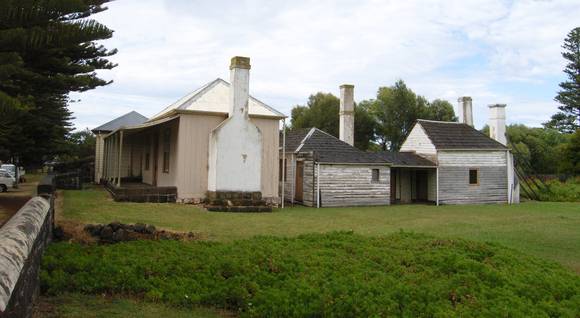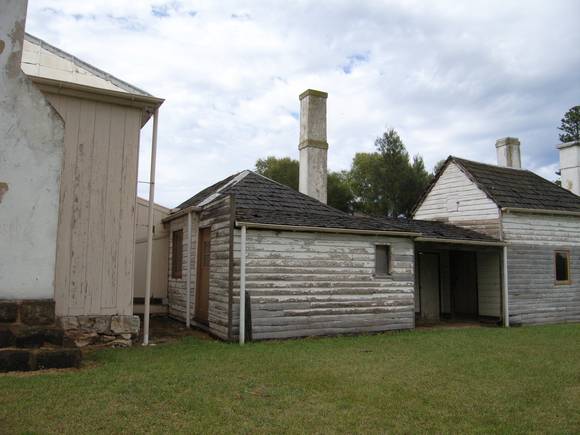| Back to search results » | Back to search page » |
|
CAPTAIN JOHN MILLS HOUSE
Other NamesMILLS' COTTAGE , MILLS COTTAGE Location40 GIPPS STREET PORT FAIRY, MOYNE SHIRE
File Number602842LevelRegistered |
|
Statement of Significance
What is significant? Captain John Mills' House is located on a slight rise in what is now
Gipps Street, Port Fairy, the street in the town grid aligned with the
River Moyne. The earliest, middle section of the dwelling, probably
built in late 1843, faces the west bank of the river which was then
developing as a port. The second, rear section was built before 1848.
The third, front section, built in 1853, clearly addresses the formal
street pattern, which was imposed in the mid 1840s. The stages of
construction reflect the building techniques possible at that time and
all the opportunities provided by a port. They range from the simplest
timber framing with split boards, shingles and casement windows,
through the relatively more sophisticated use of double hung sash
windows, to the imported prefabricated structure of the front building
with its sheet iron roof, cast iron columns from Sydney and verandah
flag stones, possibly from Scotland. Significant early joinery and
decoration, such as rare wallpapers also survive. Stables were built
on the northern boundary in 1859. Other minor structures and works
also existed on the site. The house remains significantly intact to
its late 1850s extent, is in good condition externally but only fair
condition internally. John Brabyn Mills (1809-1877) and his brother Charles Frederick
(1812-1855) were, at first, sealers and whalers, but became
increasingly settled at Port Fairy as a maritime trader and as a
farmer. Charles was the first occupant of the house until he moved to
his farm, Woodbine, in the mid-1850s. Captain John Mills was appointed
the Harbour Master at Port Fairy in 1853, retiring from that position
in 1871. He also held other positions of importance in the community.
He occupied the house from the mid-1850s until 1871. The Mills family sold the property in 1909 to their neighbour, James
Bragg, a carrier. It remained in private ownership until 1984 when it
was presented as a house museum. It was then purchased by the State
because of its significance. How is it significant? Captain John Mill's House is of scientific, aesthetic, architectural
and historical significance to the State of Victoria and to the nation
of Australia. Why is it significant? Captain John Mill's House is important as, in its earliest part, one
of the oldest surviving timber structures in Victoria, for its
sequence of development and for demonstrating a range of early
building techniques and materials. These are important for reflecting
the special nature of Port Fairy, also known as Belfast, as one of the
busiest ports in colonial Victoria. It is also important for its
representation of the pioneering mariners, John and Charles Mills and
their families, especially John Mills in his authoritative role as
Harbour Master.
[Online Data Upgrade Project 2001]
Group
Residential buildings (private)
Category
Cottage









